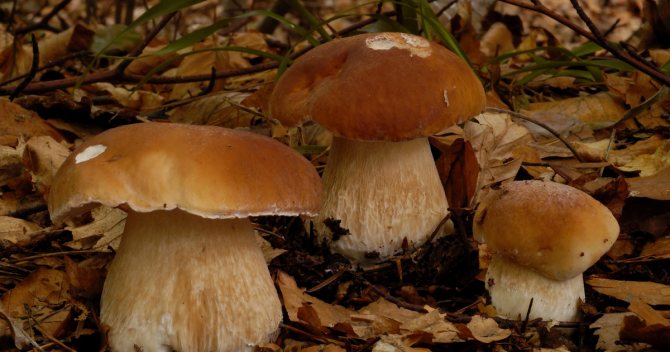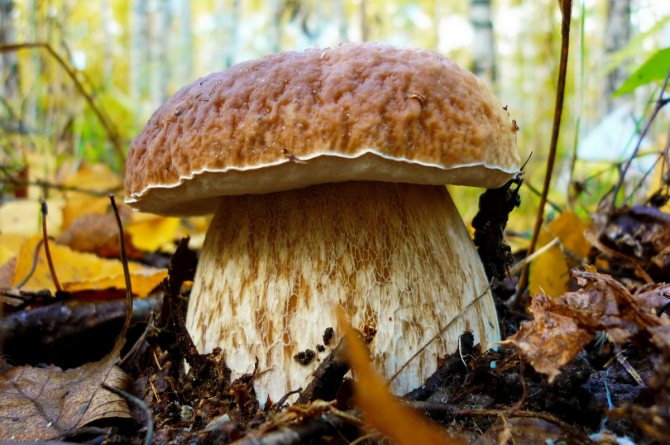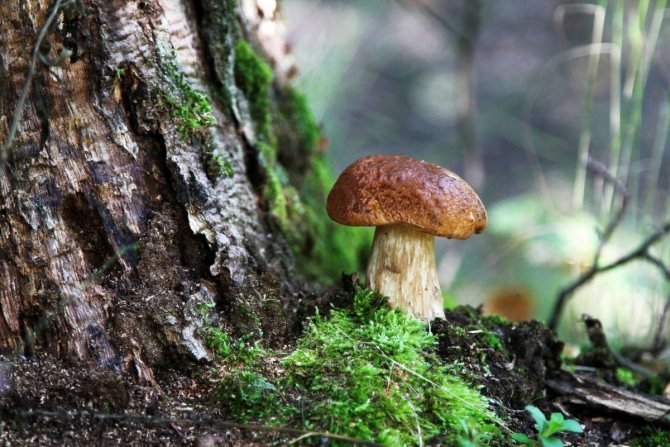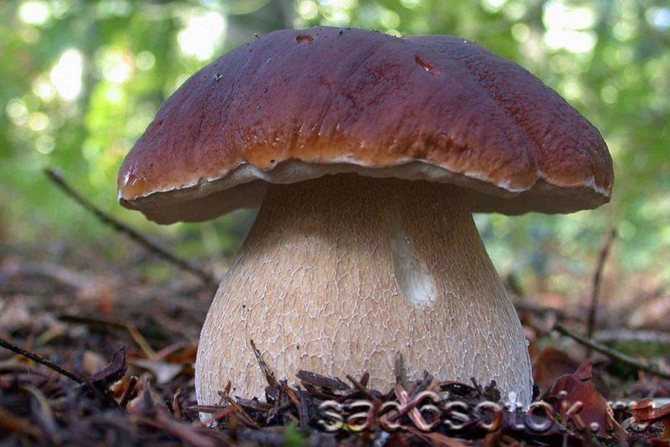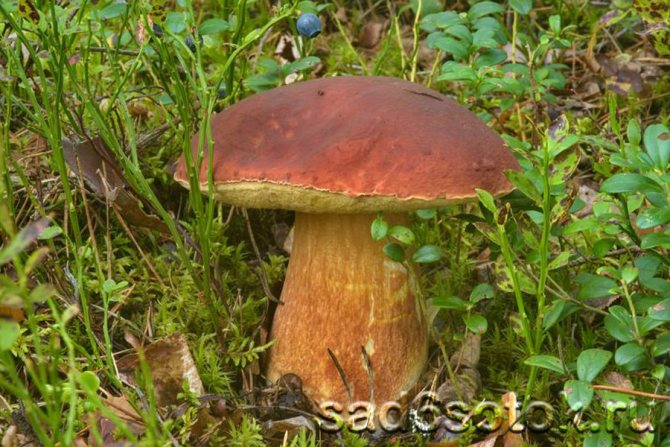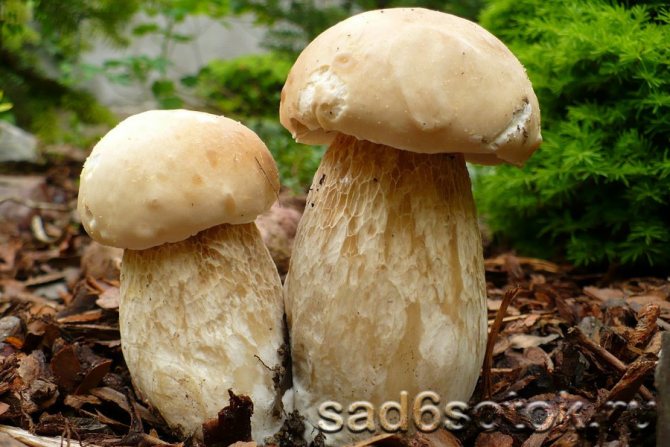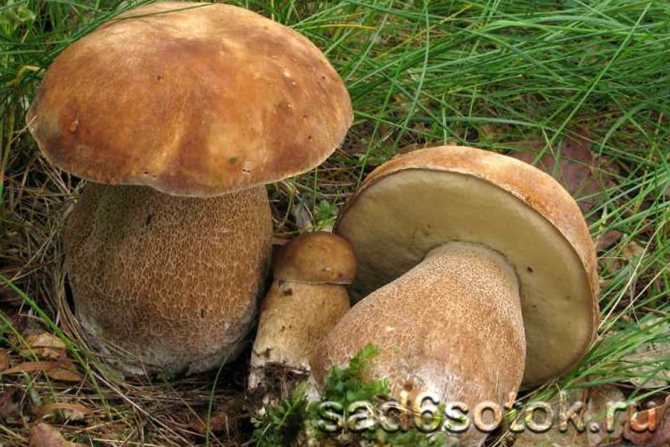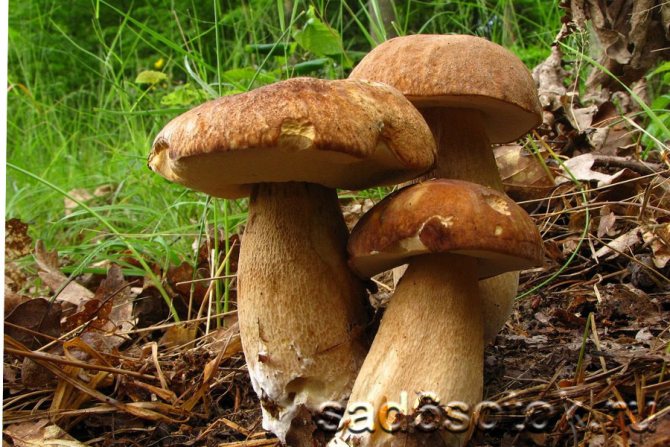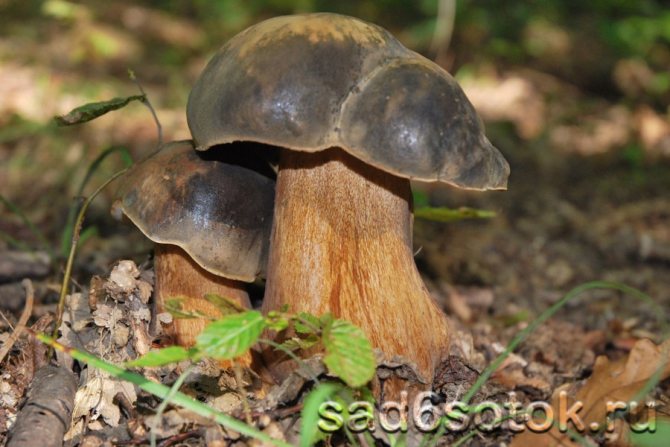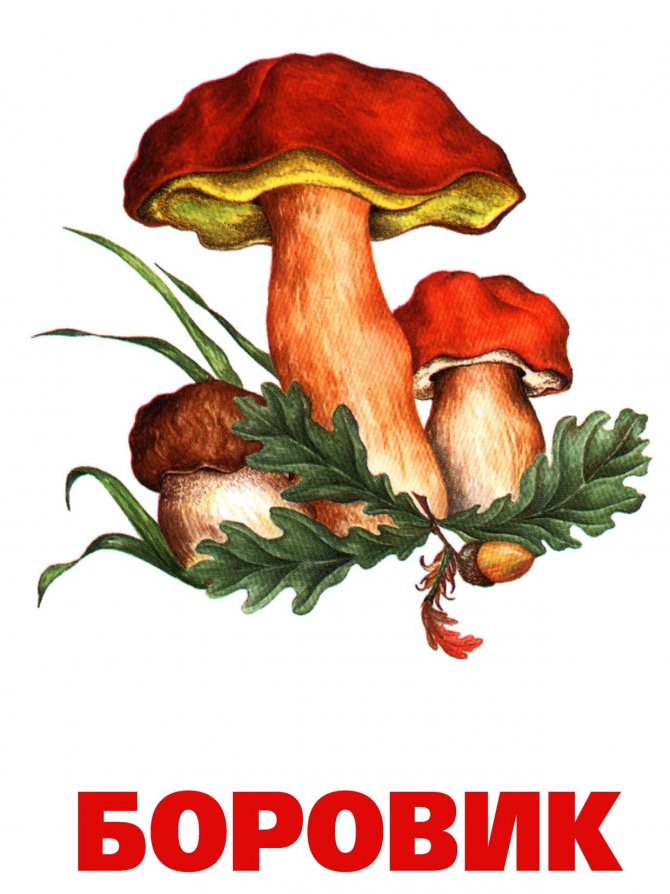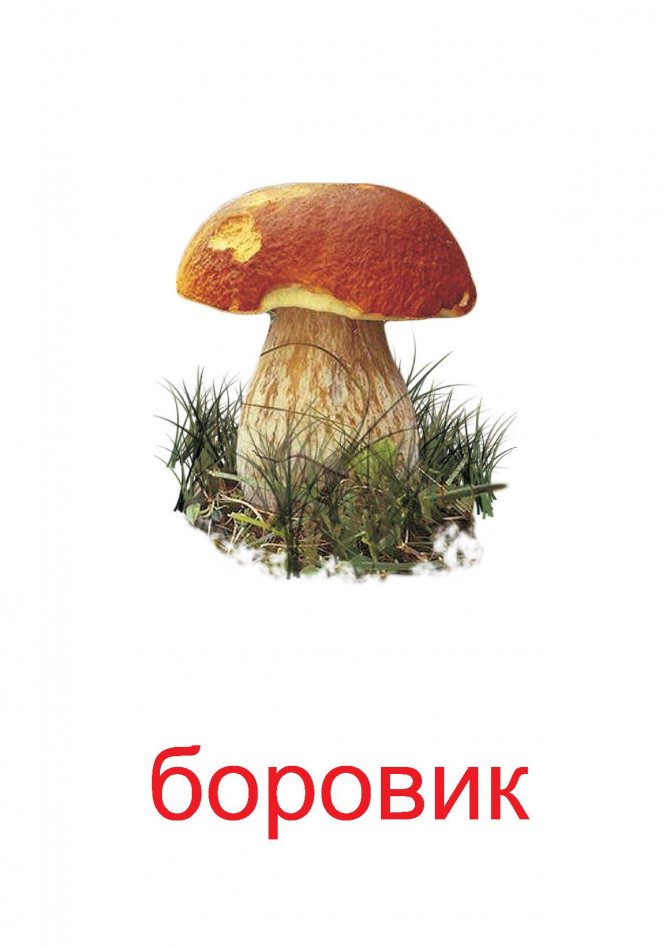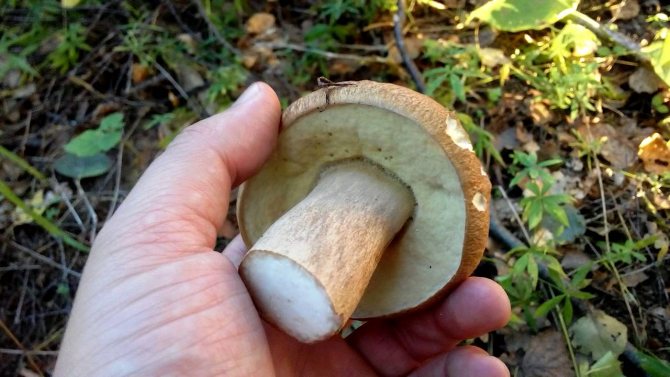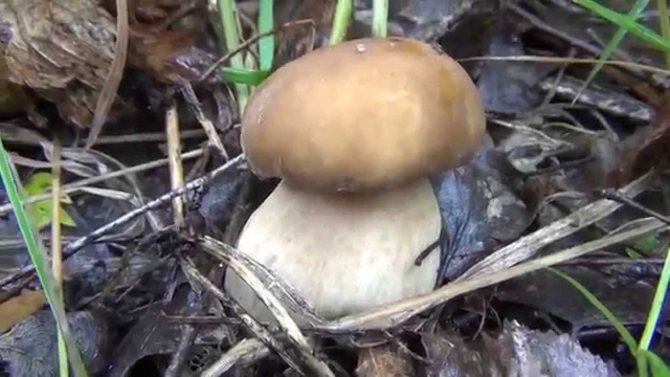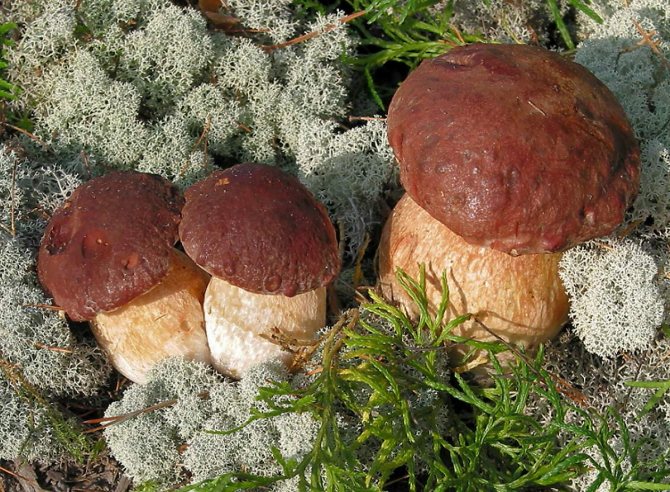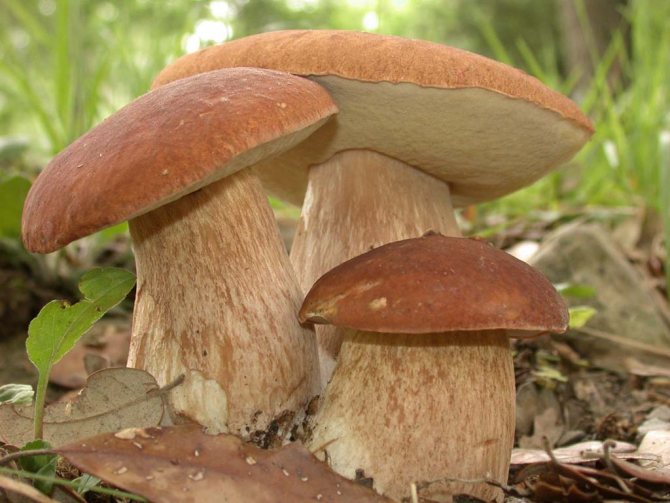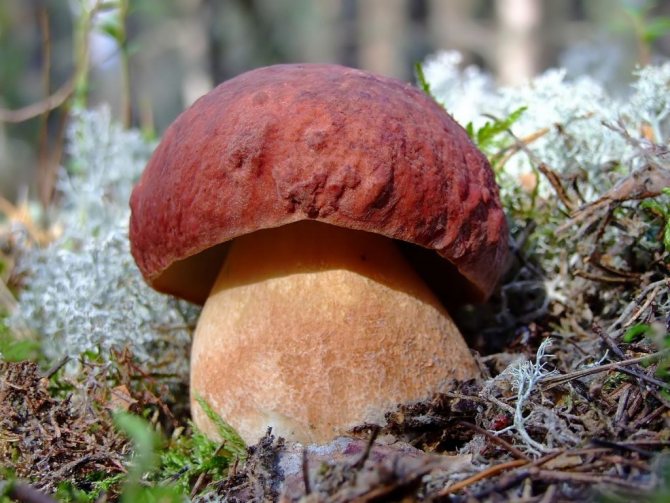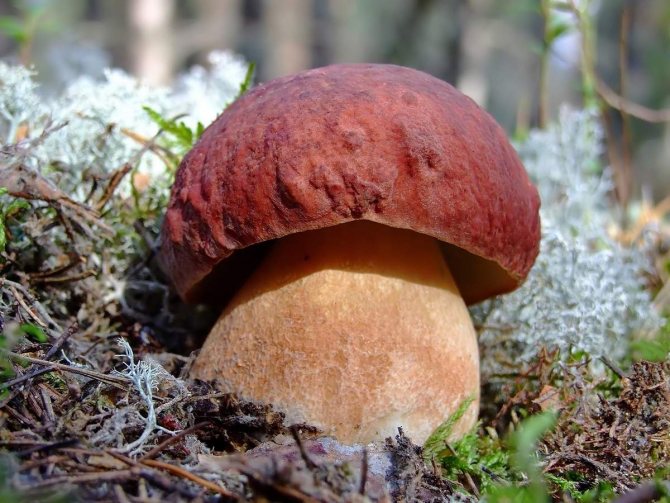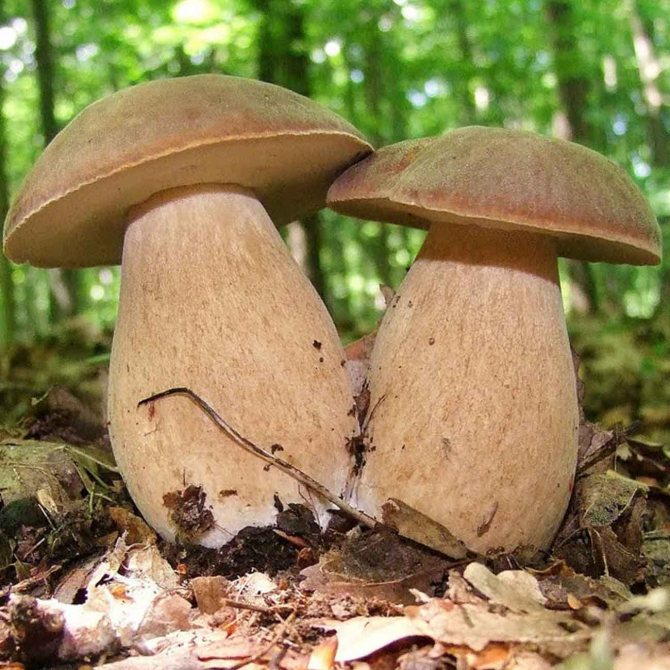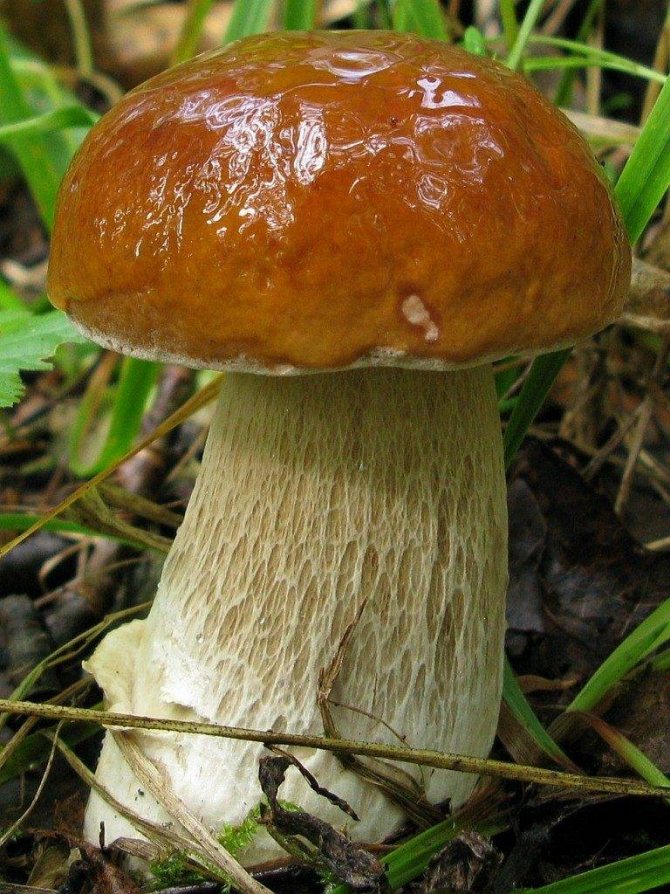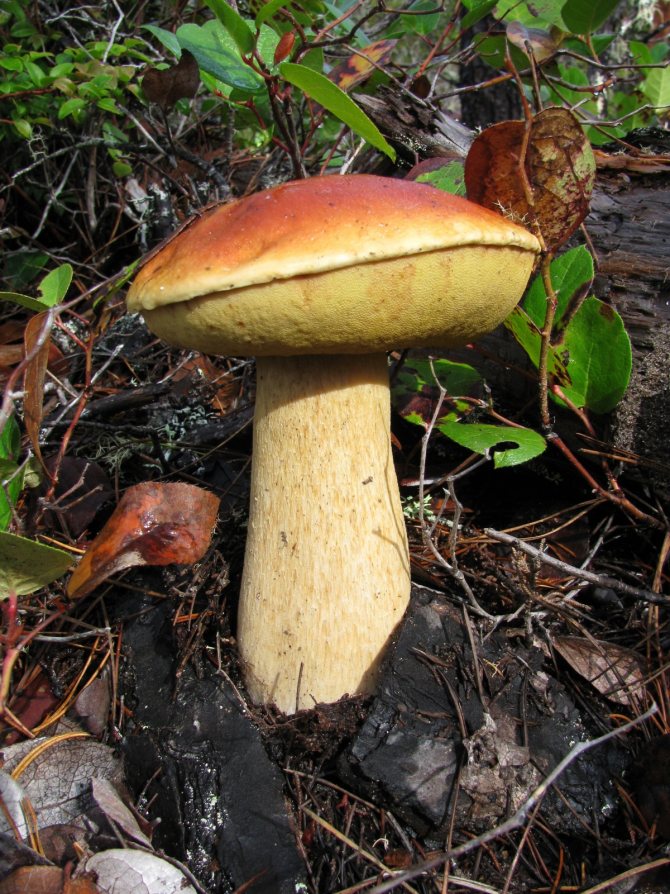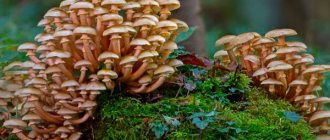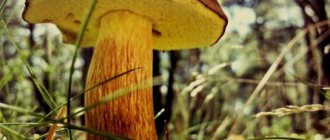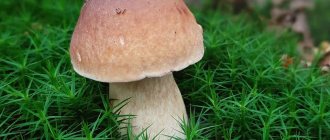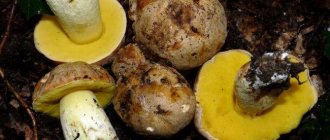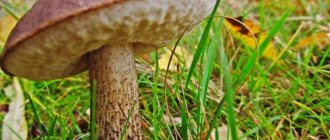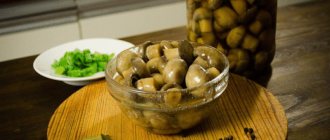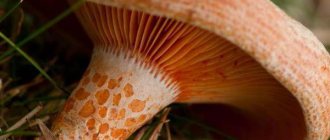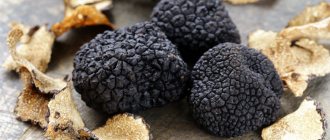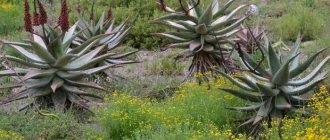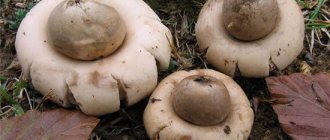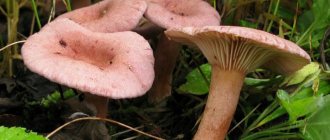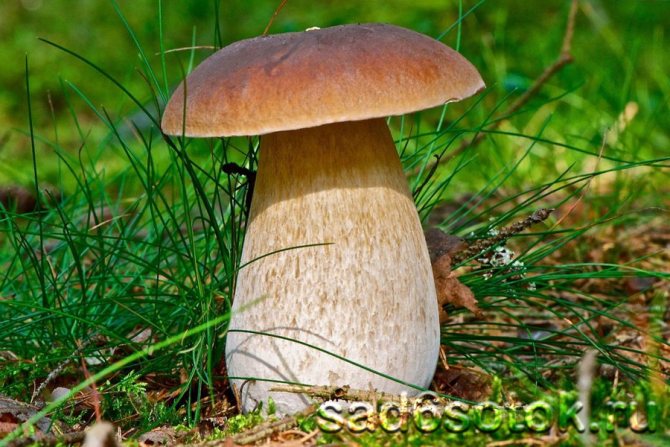
Porcini mushrooms (boletus)
The most valuable and desirable of all edible species - the famous white mushroom or boletus is tubular and belongs to the Boletaceae family. An incredible variety of dishes can be prepared from fragrant strong boletus - they are delicious in soups and hodgepodge, fries and pies, pickles and marinades.
There are about twenty varieties that differ in the color of the fruit bodies and the distribution at the root system of a particular tree species.
Description
A distinctive feature of the porcini mushroom is its color, which does not change even after processing: drying or roasting. According to other sources, the porcini mushroom got its name due to its inimitable taste (in comparison with other members of the family, which, moreover, have a darker color on the cut).
The porcini mushroom has the following structure: leg, pulp, cap and cover. Each element plays an important role in the formation of the body. Let's take a closer look at each of them:
Hat - the porcini mushroom is so much loved by people due to its delicate aroma and piquant taste. The hat of the forest celebrity grows in diameter from 7 to 30 cm (in rare cases up to 50 cm) and has a characteristic brownish-brown color.
In order to establish the lifespan of the fungus, it is necessary to carefully examine the cap: in young organisms it is convex, as if drawn, in adults and overripe, it is flatter and more outstretched. The usefulness of a part of the fruiting body changes from weather conditions, for example, during drought and strong winds, the surface may crack or become covered with a mesh of small wrinkles; during the rainy season, a mucus film may form. In most cases, the mushroom cap looks smooth, neat, and soft to the touch with a velvety texture. The color of a part of the fruiting body (it can be reddish brown or milky white) and its density depend on the age.
- Pulp - to understand whether the mushroom is ripe, it is enough to examine its pulp: it should be dense, juicy and fleshy, and, of course, white. Overripe plants have a yellowish tint and a more fibrous core structure.
- Leg - an average full-fledged mushroom has a leg about 12 cm high (taller plants reach 25 cm). The diameter of a part of the fruiting body can vary from 7 to 10 cm. To determine which mushroom is in front of you, look at its stem: in white representatives of the Boletaceae family, it has a barrel-like (club-shaped) shape. Its color can vary from white to deep brown with dark red spots.
- Bedspread and spore powder - in porcini mushrooms, perfectly clean bases of the legs are observed, which indicates the absence of blanket remnants. As for the spore powder, it has a juicy olive-brown hue, and the spores are spindle-shaped and very tiny in size.
The porcini mushroom is a unique representative that is actively used in cooking and other fields. But the main disadvantage is that in nature there are so-called "false porcini mushrooms", which you certainly need to learn to identify, otherwise the result will not please the mushroom picker.
Boletus mushroom - description and photo. What does boletus look like?
The boletus has a massive body, consisting of a cap and a very thick leg.The rounded boletus cap is often pillow-shaped. It can be velvety to the touch or completely smooth. The stem of the mushroom has a characteristic thickening at the bottom or in the middle. The surface of the stem is fibrous or covered with a mesh of scales, sometimes even. The flesh of boletus is white or lemon-colored, often turns blue when cut, very rarely red or remains white.
The pores of the fungus are yellow, red, sometimes white. The spore powder has a brown color of various tones.
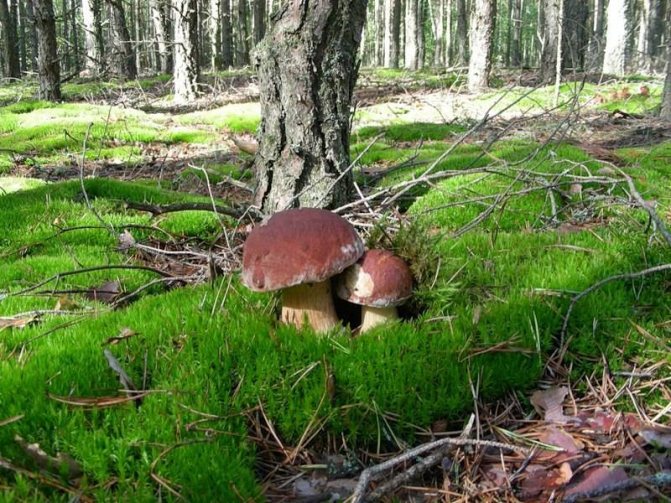

Views
The porcini mushroom has not lost its popularity for many decades. But it is important to understand that there are several varieties of porcini mushrooms that should not be confused with each other.
Reticulated porcini mushroom
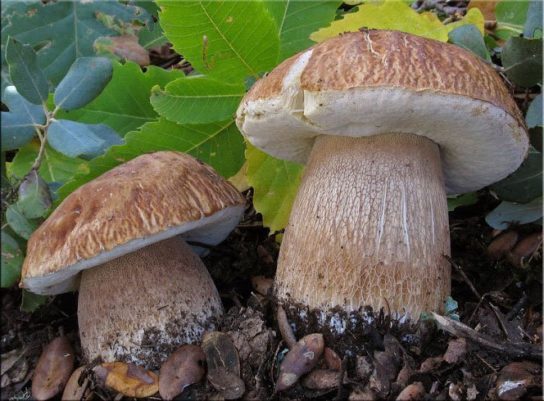

An adult boletus grows with a cylindrical leg and a cap, the diameter of which ranges from 6 to 30 cm. The net mushroom has white flesh. Depending on the location, the boletus ripens in June-September. Beech, chestnut and oak forests located in Africa, Europe, America are considered to be the most frequent places of growth of the plant.
Birch white mushroom
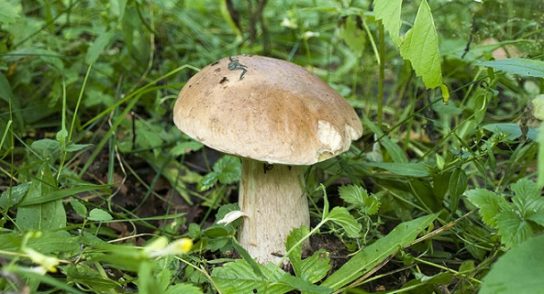

This species is often called spikelets. To distinguish a birch mushroom, it is enough to look at its color, as a rule, it is light. The cap of the spikelet reaches 5-15 cm in diameter, the stem is barrel-shaped and has a pleasant white color. It is not surprising that the porcini mushroom can be found only under the birches. Accordingly, all territories in which such trees grow can be considered the places of growth of a plant.
Oak porcini mushroom
A brown hat with a grayish tint is the main distinguishing feature of oak porcini mushrooms. Mushrooms have a looser flesh and are concentrated mainly in the Caucasian oak forests.
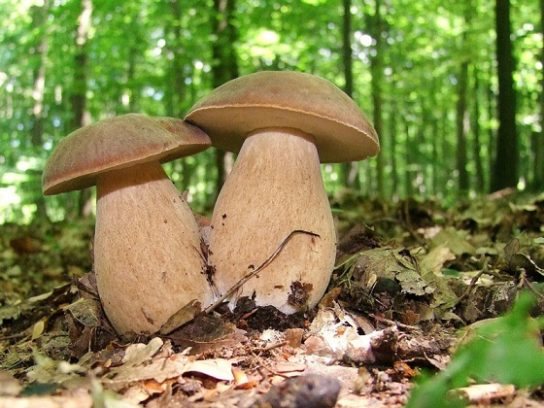

Pine porcini mushroom
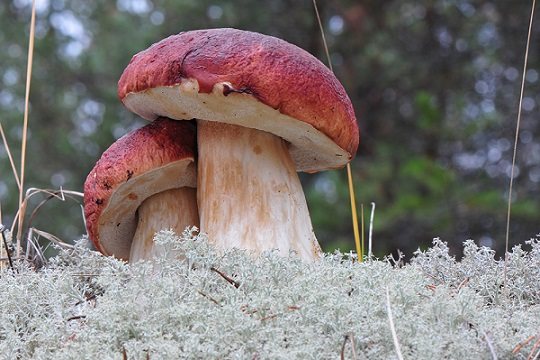

It is often also called pine-loving boletus. Distinctive features are a large cap of dark shades (sometimes even purple), brownish-red flesh, brown or white short, thick leg. You can meet the mushroom in pine forests in Europe and Asia, as well as America.
Spruce white mushroom
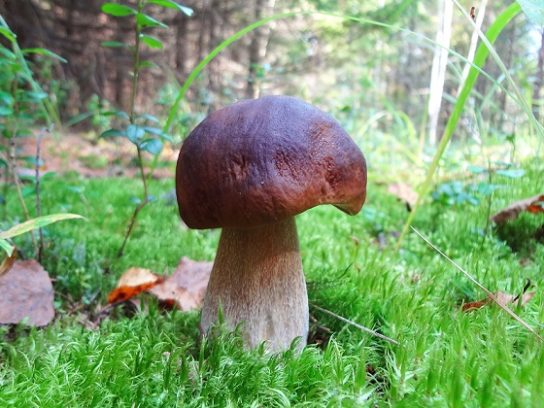

This type is one of the most common. Mushrooms have a reddish-brown cap, a long and thickened stem from top to bottom. You can find a forest celebrity in Europe.
Dark bronze porcini mushroom
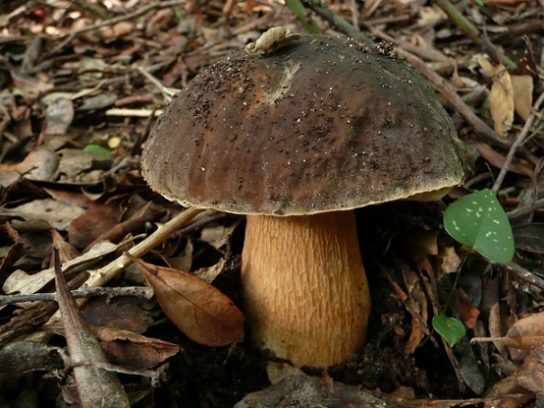

Distinctive features of boletus of this group are the dark color of the leg and cap, the cylindrical shape of the part of the fruiting body, white and pleasant flesh. Most often, copper-colored mushrooms can be found in North America and Europe, in oak and beech forests.
Royal and porous
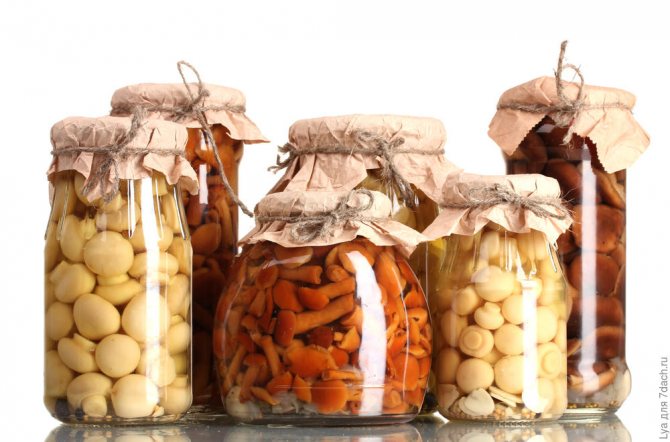

Royal boletus grows in Russian forests. He prefers beech thickets. Of the soils, he likes limestone and sandy substrate the most. Fruiting is observed from the first decade of June to September. The mushroom looks pretty attractive. The upper area is deep pink or lilac-red. Its diameter is 15 cm. Adult specimens have a flat and pillow-shaped cap. There is a dent in its central part. It has a soft and dense texture.
Variety Boletus (Boletus porosporus) belongs to the category of flyworms. Most often inhabits mixed and deciduous forests. Here he bears the harvest in June. You can find it in the indicated areas until September. The appearance of the hat resembles a hemisphere or pillow. This variety has a dense pulp with a smell reminiscent of the aroma of apples and is considered conditionally edible.
When does it grow?
Size, color, structural features - it all depends on the place where the porcini mushroom grows. The period of active growth begins in late spring - early summer. In October-November, mushroom shoots appear in large quantities. Porcini mushrooms ripen for a long time. They grow in whole families or in ring colonies.That is why, seeing a whole "family" of boletus mushrooms, the mushroom picker will definitely be in a good mood.
Members of the Boletaceae family can grow in deciduous, coniferous, mixed forests. They are concentrated under pines, birches, spruces, oaks, firs, hornbeams. It is recommended to pick mushrooms in those places where moss and lichen grow, as well as on loamy, sandy, sandy loam soils. Boletus almost never grow in swamps and peat areas. Mushrooms love light, do not like waterlogged soil and low air temperatures.
The white mushroom has also been seen in the forest-tundra and forest-steppe, while in the steppe zones it is unrealistic to find a white mushroom.
Poisonous boletus - varieties
Among the 300 known species of boletus, there are inedible, as well as hazardous to health representatives, similar to edible boletus:
- boletus purple (Boletus purpureus)
a poisonous mushroom with a characteristic convex cap with uneven edges, covered with black spots. The pulp on the cut turns blue, and after a while it turns red. The fungus grows on the calcareous soil of deciduous forests;
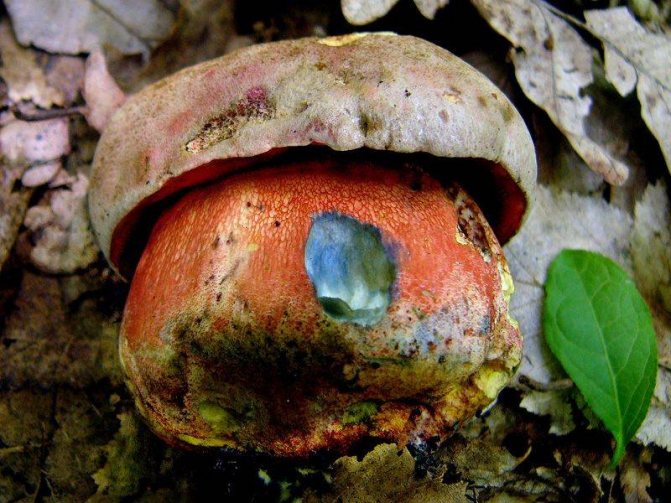

Photo by: Irina Ukhanova
- boletus Le Gal (Boletus legaliae)
a poisonous, toxic mushroom, characterized by a smooth pinkish-orange head. There is a pronounced red mesh on the upper half of the leg. The pulp is white or light yellow, turns blue on the cut. Grows in deciduous forests of Europe;
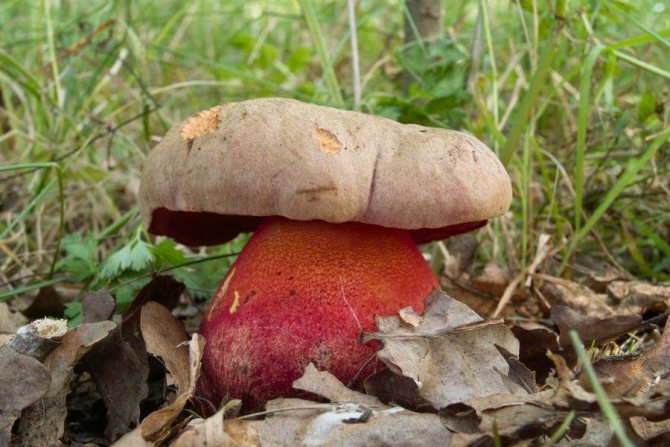

- boletus boletus (beautiful) (Boletus calopus)
an inedible mushroom, with a wrinkled, dry, matte cap. The pointed leg is lemon yellow at the top, red in the middle, turning into brown. The pulp has a bitter taste and turns blue on the cut. It is found everywhere in the mixed forests of the European part of Russia;
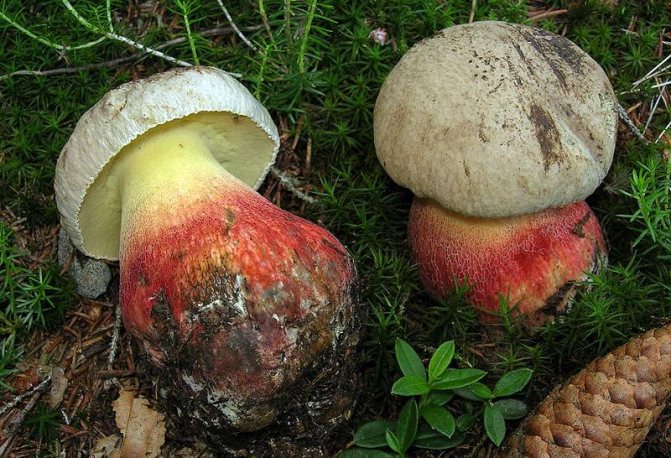

- beautiful boletus (Boletus pulcherrimus)
poisonous mushroom. The hat is hemispherical and has a reddish or olive brown color. The pulp is yellow, turns blue on the cut. The leg is reddish brown, has a dark red mesh below;
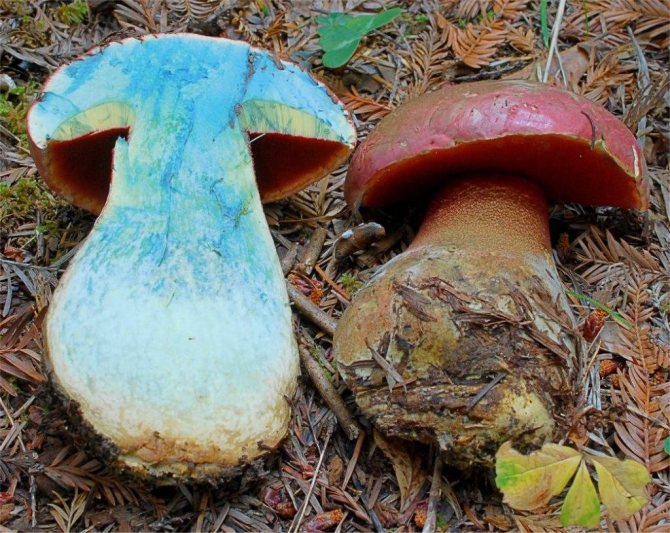

- satanic mushroom (Boletus satanas)
poisonous mushroom. The hat is hemispherical, the flesh is yellowish or white, it turns red or blue on the cut. The leg is barrel-shaped, tapering downward. The color of the leg is red-yellowish above, bright red or orange in the middle, brownish-yellow below. The satanic mushroom grows in deciduous forests.
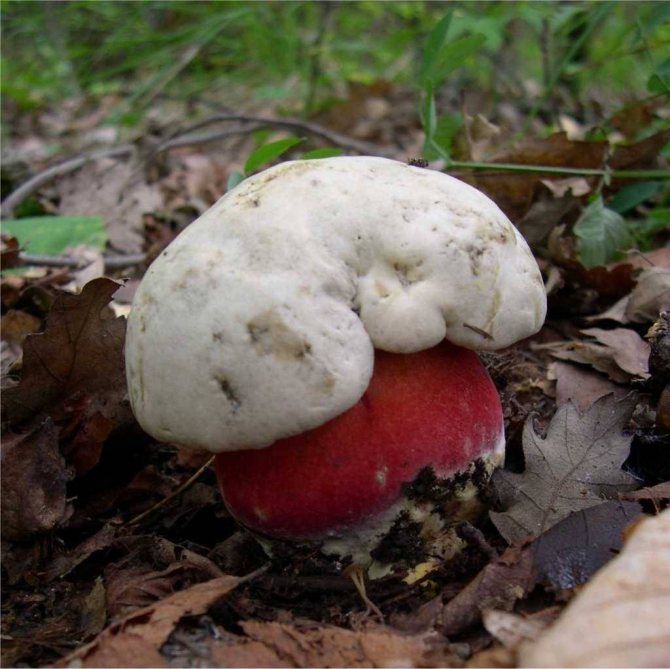

How to distinguish a white mushroom from a false one?
In nature, there is such a thing as "false white mushroom". This is a separate species of lower plants that can easily be confused with potential prey. The people call the false porcini mushroom gorchak. There are several main differences, thanks to which you can determine the type of representatives of the mushroom kingdom:
- Cut Color - To determine which mushroom you have picked, you need to cut it off. The flesh of a genuine mushroom always remains white, while the inner layer of the fruiting body of the bitterness will darken and acquire a pinkish-brown hue.
- The structure of the leg - the gall fungus has a very interesting structure of the leg - it has a peculiar pattern resembling a mesh (the boletus does not have this).
- Hymenophore - in a false white fungus, the tubular layer has a pinkish tint, in an edible genuine plant it is yellowish or white.
- Taste - bitterness is easy to identify by tasting a dish prepared from it. False mushroom has a bitter, unpleasant taste that does not change when cooked or roasted. White boletus has a pleasant aroma and spicy taste.
False mushroom cutaway


Gorchak is the inedible double of the porcini mushroom
In order not to be mistaken and not to serve a tasteless dish on the table, novice mushroom pickers should carefully familiarize themselves with the main differences between porcini mushroom and bitterness.
Cooking and pickling recipes
Boletus is used in various dishes. They do not lose their taste during boiling, frying and salting. In some countries, they are eaten raw. Porcini mushrooms do not require long cooking or steeping.When boiled, Borovik does not darken, which allows you to cook soup with light broth from them. Aromatic mushroom soup is prepared according to the following recipe:
Ingredients:
- 1 glass of pearl barley.
- 3 medium potatoes.
- 2 carrots.
- 1 onion.
- 300g mushrooms.
Pearl barley is cooked over low heat until the broth thickens. Mushrooms are fried with onions, and, together with chopped potatoes and carrots, are sent to the barley pan. You can add herbs, bay leaf or pepper to taste. After removing from heat, pour in a spoonful of butter and let it brew for 20 minutes.
Fried mushrooms
Fresh boletus does not lose its flavor when fried. There are many such dishes not only in Russian cuisine. For example, you can make fried mushrooms following an old Italian recipe.
Ingredients: fresh boletus, flour, oil (preferably olive oil) Chop the mushrooms and roll in flour. To create crispy mushrooms, place the mushrooms in cold water before frying. After frying in a hot skillet, blot them with absorbent paper. Sprinkle with salt or other seasonings on top and serve hot.
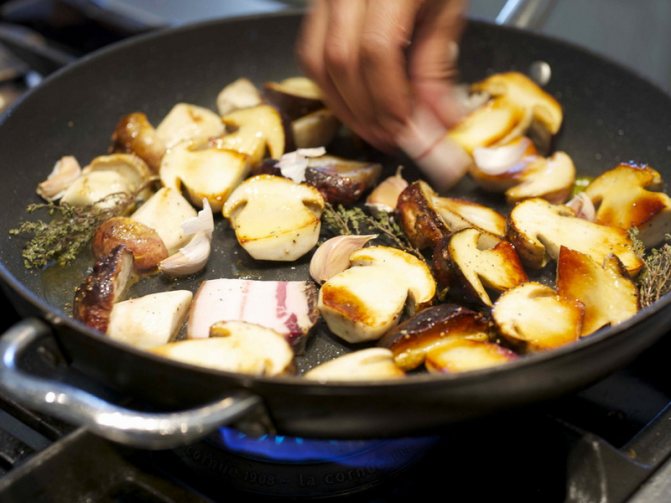

Marinated mushrooms
To store Boletus for a long time, they are dried, frozen, salted. In cold winter, you can enjoy delicious pickled mushrooms. This will require mushrooms, water, vinegar, salt, peppercorns, bay leaves, garlic, cloves.
Rinse and chop the mushrooms before cooking. Put Boroviki in a saucepan with salted water. Bring to a boil, drain and cook again. Drain the water, and rinse the mushrooms with water. For the marinade, boil 1 liter of water with 1 tablespoon of salt and a little less sugar. Add mushrooms, garlic, bay leaf, pepper, 1 tablespoon of vinegar. Let it boil for a while and pour it into the jars.
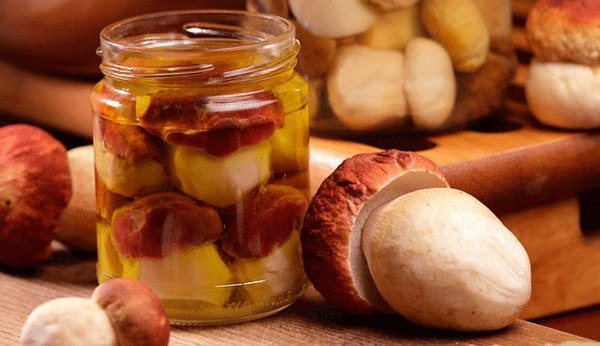

Not only people love to harvest Boroviks, but also “forest dwellers”. Squirrels dry them by putting them on twigs and branches. Thus, she can prepare almost a kilogram of mushrooms.
Viewed: 4,140
Share the entry
- Similar posts
- Uspenskie mushrooms: description, when to collect, photo + video
- The names of edible and inedible mushrooms with pictures
- Kombucha: what is useful and how to grow
- Umbrella motley mushroom: description + photo, preparation and cultivation
- Boletus mushrooms - edible mushrooms
- May ryadovka: description, places of growth + photo
Beneficial features
White mushroom is a source of nutrients, including vitamins A, C, B1, D, as well as ascorbic acid, selenium, calcium, iron, phytohormones, ergothioneine. The plant contains a unique water-soluble compound - riboflavin, which is responsible for the health and growth of skin, hair, nails and strengthening the immune system in general. This substance helps to improve the condition of the thyroid gland and maintain its functions.
The beneficial properties of porcini mushrooms include stimulation of the secretion of digestive juices. The composition also contains minerals, including sulfur and polysaccharides. The use of porcini mushrooms helps to prevent cancer.
The unique composition of boletus mushrooms provides anti-infectious, wound-healing, tonic and antitumor effects. Mushrooms are an excellent source of healthy proteins, provided the food is prepared from pre-dried foods.
The forest celebrity contains lecithin, which resists cholesterol deposits on the walls of blood vessels and is indicated for diseases such as atherosclerosis and anemia. Useful amino acids, in turn, promote cell renewal, as a result, are beneficial for the kidneys, eyes, bone marrow and human liver.
Eating porcini mushrooms in spring and autumn can provide the body with protection from various viruses, bacteria, carcinogens and fungi. The enzymes included in the composition help in the breakdown of fiber, glycogen and fats.Before eating mushrooms, it is important to understand that they are an extremely heavy food, so they should be eaten in small quantities and preferably with other vegetables.
The porcini mushroom is also prized for its healing properties. In medicine, drugs are made from it to improve metabolism, with a breakdown and tuberculosis. Dried foods are used to treat angina pectoris. Boletus tinctures are used for ulcers and frostbite.
The season for gathering yellow boletus
The boletus harvesting season begins in mid-summer and ends in early October. Most mushrooms can be harvested in mid-August and early autumn. The dates may be shifted by several days due to weather conditions. You need to search under beech and oak. There are many mushrooms in a warm and humid place, most often such conditions are at the edge of the forest.
Did you know? If the yellow boletus is actively harvested, then it will have to be included in the Red Book, because it is already quite rare.
Contraindications
Despite the fact that the porcini mushroom is edible, it can also be poisoned and there are a number of contraindications to the use of boletus. First of all, children and pregnant women should refrain from dishes containing porcini mushrooms. This is because mushrooms contain chitin, which is very difficult to digest and creates additional stress on the kidneys and the digestive system. In addition, like any other product, boletus can cause an allergic reaction.
Contraindications to the use of porcini mushrooms:
- acute diseases of the gastrointestinal tract, liver;
- age up to 12-14 years;
- carrying a child.
You can also get poisoned with porcini mushrooms if you cook a "false porcini mushroom", which happens very often due to unscrupulous and inexperienced mushroom pickers.
Interesting facts about boletus
- Boletus is one of the largest mushrooms. The weight of individual individuals can reach 3 kg, although the fruiting period of the boletus is short, only 7 days.
- There is a sign among the people: if fly agarics have appeared in the forest, you can go after boletus.
- Ants love to build their dwellings near the boletus mycelium, so an anthill for a mushroom picker is a good reason to look carefully at their feet.
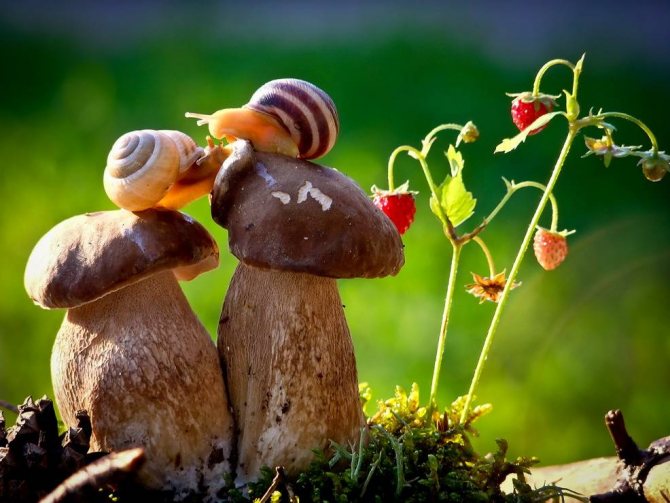

Did you like the article?
Growing at home
The most reliable and safe way to get fresh, environmentally friendly and reliable mushrooms is to grow them yourself. In fact, the technology for breeding boletus at home is not at all complicated, but it will require maximum accuracy and perseverance from the beginner. We admit that the procedure takes a long time, so you need to be prepared for this.
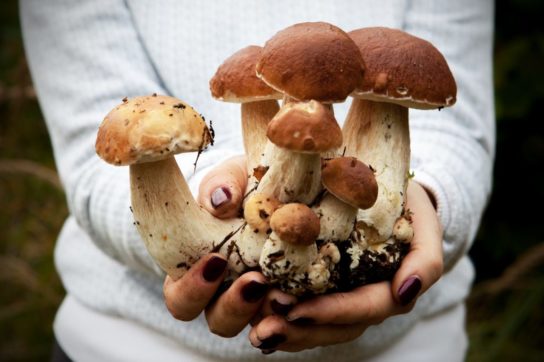

As you know, the porcini mushroom is a forest dweller, therefore, on the site where it will grow, there must be trees (pine, birch, oak, spruce or aspen) or the territory must be near the forest. Ideally, the trees should be at least 8-10 years old. Experienced summer residents grow mushrooms in two ways:
- from the mycelium;
- from the spores located on the cap of the mushroom.
The first method involves the acquisition of special high-quality planting material and the determination of a favorable location. Mushrooms should be planted between May and September. For successful germination, soil is removed around the trunk of the selected tree (about 15-20 cm of the top layer) and peat or compost is laid out (the layer should not exceed 3 cm). The mycelium is placed on the prepared soil in a checkerboard pattern, keeping a distance of 30 to 35 cm between the pieces.
The laid mycelium must be “covered” with soil that was removed earlier, and then watered abundantly. It is recommended to mulch the plot with straw, and then water it several times a week (top dressing is encouraged). It is very important to cover the ground with moss, fallen leaves or spruce branches before frost. The first harvest can be expected in a year.
To implement the second method, you will need caps of mature or overripe porcini mushrooms.It is important to pay attention to which tree the boletus is obtained under, because it will be necessary to plant it under the same perennial plant in the future. The porcini mushroom tends to deteriorate quickly, therefore, after cutting, it must be specially processed within 8 hours. Already after 10 hours, half of the minerals and macronutrients of boletus is lost.
The extracted hats should be separated from the legs and soaked in water for a day (7-12 pieces will need one bucket). To achieve a good result, it is recommended to add alcohol to the liquid at the rate of 3-5 tbsp. 10 liters or sugar about 15-20 g. After 24 hours, the caps must be kneaded to a jelly-like mass and filtered through cheesecloth. To land, you first need to prepare a place (everything is done in the same way as in the first method). Water with spores should be poured onto a fertile pillow, and the mushroom cake remaining from the caps should be spread on top. The prepared soil is also covered with previously removed soil and straw.
The main care is abundant, but not frequent watering. Before frosts, the clearing is covered, in the spring the "blanket" must be removed. After a year, you can feast on the harvest.
There are other ways to grow mushrooms, for example, in the forest, you can dig up pieces of mycelium, the size of a hen's egg, and put them in shallow holes under a tree in your area. Further, the holes are covered with soil and watered regularly. How to choose a way to grow mushrooms at home is up to the mushroom picker. The main thing is regular and high-quality care, as well as thorough preparation of the soil. Homemade mushroom glades can bear fruit for 3 to 5 years.
White mushroom is a very healthy and tasty product, but you always need to be careful when collecting, processing and preparing boletus.
Rules and places of collection
Experienced mushroom pickers always adhere to the basic rules of mushroom picking, which can be summarized in the following theses:
- never take a copy in the basket that arouses the slightest doubt;
- do not break out the mushroom units, but cut them off with a sharpened knife;
- go out on a mushroom hunt early in the morning when the dew "helps mushroom pickers";
- harvest mushroom crops only in ecologically clean areas.
Boletus grow in sunny glades or in the shade of forest trees. They prefer pines, spruces, oaks and birches.

